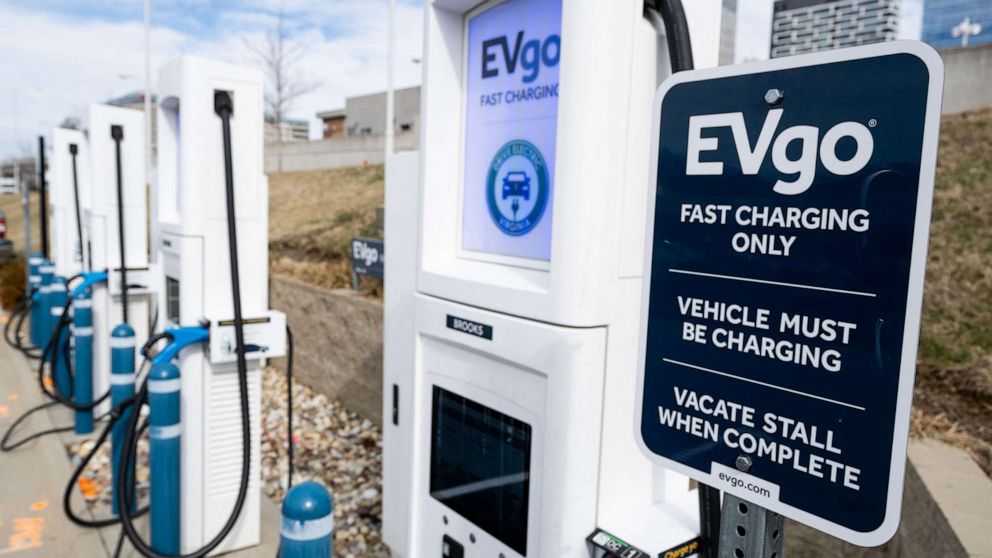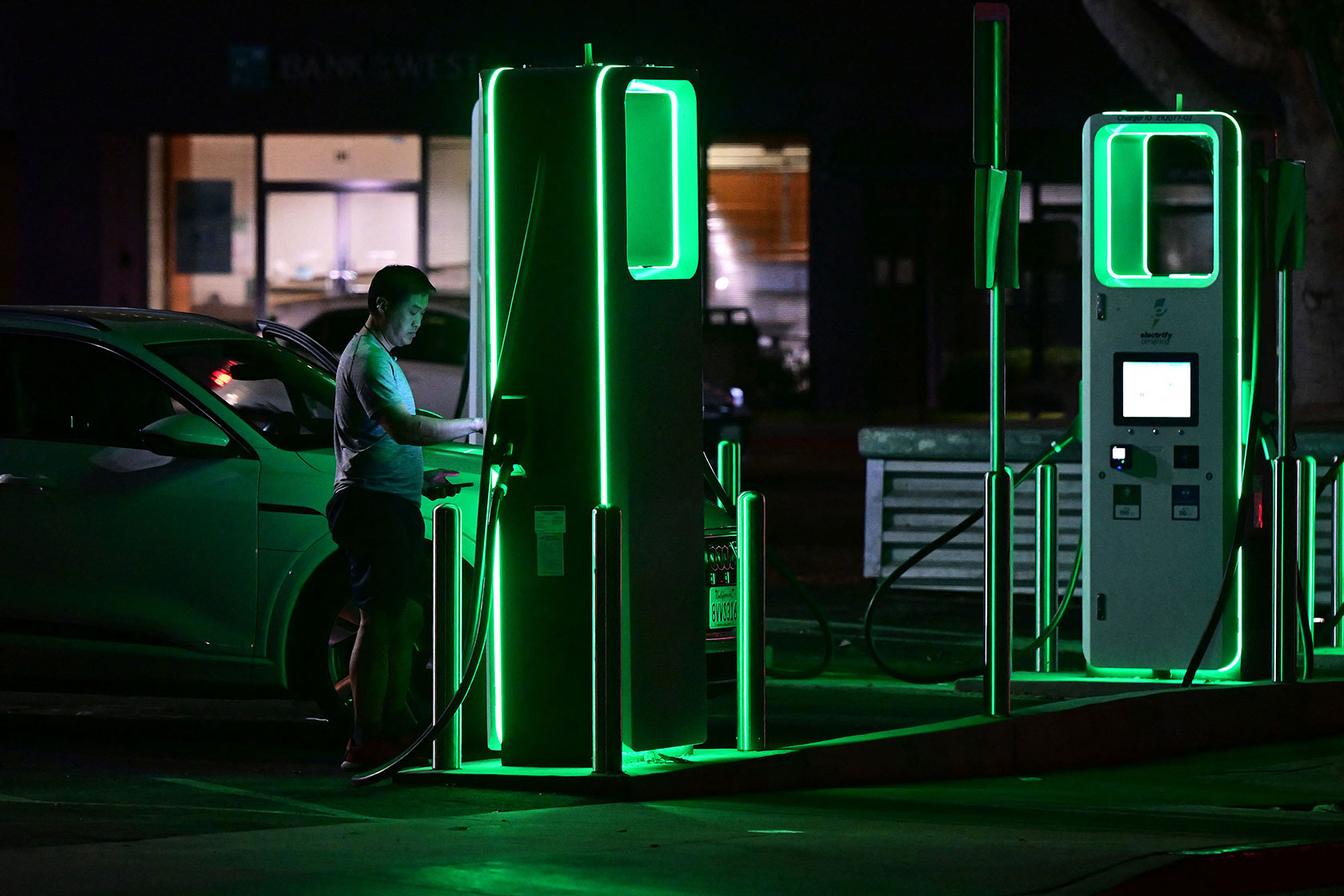Key Innovations in the EV Sector You’ll Find in Today’s Buy EV Charging news
Key Innovations in the EV Sector You’ll Find in Today’s Buy EV Charging news
Blog Article
Leading EV Charging News: Key Updates on Infrastructure and Innovation

Current Advancements in Fast-Charging Technology
Additionally, developments in battery innovation, consisting of improved thermal monitoring systems and greater power thickness batteries, enhance fast-charging abilities. These advancements alleviate the threat of battery deterioration throughout quick charging, making sure longevity and performance for EV owners.
Furthermore, the combination of clever billing remedies is boosting individual experience, making it possible for real-time monitoring and dynamic pricing versions. EV Charging news. This adaptability permits vehicle drivers to enhance charging costs and times based upon grid need
As automakers proceed to purchase fast-charging networks, the collaboration in between sector stakeholders is crucial. Partnerships in between billing terminal suppliers and automobile manufacturers are leading the way for substantial coverage, ultimately fostering a more durable EV ecosystem. These advancements are essential in supporting the transition to sustainable transport.
Federal Government Initiatives for Billing Expansion
Government efforts play a critical duty in the growth of electrical car (EV) charging facilities, facilitating the shift to lasting transportation. Numerous government and state programs are being implemented to enhance billing accessibility, reduce the economic worry on consumers, and promote the fostering of electric lorries.
Notably, the U.S. government has assigned significant funding with the Facilities Investment and Jobs Act, which earmarks $7.5 billion for EV billing network growth throughout the nation. This funding is intended at deploying countless brand-new billing terminals, particularly in underserved areas, therefore addressing variety anxiety among potential EV purchasers.
In addition, numerous states are establishing regulation to enhance the allowing procedure for charging terminal setups, which is important for speeding up release. Motivations such as tax obligation debts and discounts for both consumers and services are also being presented to urge the setup of charging framework.
Moreover, public-private partnerships are significantly ending up being a focus, leveraging exclusive investment to match government financing. These efforts underscore a joint strategy vital for developing a detailed and effective EV charging network, inevitably adding to a greener and more sustainable future.
Cutting-edge Battery Solutions Enhancing Efficiency
Revolutionizing the landscape of electrical lorry (EV) modern technology, cutting-edge battery remedies are dramatically enhancing efficiency and efficiency. Developments in battery chemistry, particularly with lithium-sulfur and solid-state batteries, are causing enhanced power density, which permits longer arrays and faster billing times. click to read These brand-new battery kinds have the potential to outperform typical lithium-ion batteries by offering higher capacities while decreasing weight, thereby improving general vehicle performance.
Moreover, developments in battery administration systems (BMS) are optimizing energy use and prolonging battery life expectancy. Intelligent formulas check battery health and wellness and performance, allowing real-time changes to billing view it and discharging procedures. This not just boosts the efficiency of the battery yet also guarantees a much more reliable and lasting power source for EVs.
Furthermore, the integration of recycling innovations is attending to the ecological effect of battery manufacturing and disposal. Developments in second-life applications for EV batteries are facilitating their use in power storage systems, contributing to a circular economy.
As these innovative battery remedies remain to develop, they guarantee to change the EV market, making electric vehicles extra appealing and available to a broader target market while sustaining worldwide sustainability objectives.

Collaboration In Between Automakers and Billing Networks
Identifying the critical need for a robust billing framework, automakers are progressively collaborating with billing network service providers to boost the EV ownership experience (EV Charging news). These collaborations intend to create a smooth billing ecological community that profits customers and sustains the change to electric vehicles
Major automobile brands are signing up with pressures with recognized billing networks to increase their charging station protection, guaranteeing chauffeurs have accessibility to trustworthy and convenient billing alternatives. Collaborations with networks like ChargePoint and Electrify America enable automakers to incorporate billing remedies directly into their cars' navigation systems, directing customers to the nearest terminals and supplying real-time schedule updates.
Furthermore, these partnerships typically result in the growth of fast-charging technologies that dramatically decrease the moment required to reenergize an EV. By pooling resources and know-how, automakers and billing networks can innovate much faster, developing options that satisfy the growing demand for electric mobility.
On top of that, joint campaigns may also lead to more standardized billing protocols, which can reduce customer complication and promote broader EV fostering. Generally, these critical partnerships are pivotal in building a straightforward and reliable billing infrastructure that fulfills the demands of an expanding electric vehicle market.
Obstacles Facing EV Billing Infrastructure
As the electric automobile market proceeds to expand, a number of difficulties are surfacing that prevent the advancement of a thorough billing facilities. One of the key challenges is the not enough number of charging terminals, particularly in underserved and rural urban locations. This space creates variety anxiousness amongst potential EV purchasers, deterring them from making the switch.
Additionally, the lack of original site standardization in billing technology makes complex the framework landscape. Variations in plug types and billing rates can produce confusion for customers and raise functional intricacies for charging network drivers. Additionally, the assimilation of billing stations right into existing electrical grids poses considerable obstacles. Numerous regions encounter capacity restrictions, needing considerable investments in grid upgrades to suit enhanced need.
One more pushing issue is the high cost linked with the setup and upkeep of charging stations, which can be a barrier for both private businesses and public entities. Finally, governing hurdles and zoning limitations can postpone the implementation of charging framework, restraining progression in expanding crucial solutions. Dealing with these obstacles will be essential for fostering a robust EV ecosystem that supports the shift to lasting transportation.
Final Thought
To conclude, the ongoing developments in EV charging technology, sustained by considerable government efforts and cutting-edge battery remedies, are essential for the expansion and effectiveness of electric automobile infrastructure. Cooperations in between automakers and billing providers additionally boost station protection, attending to the expanding need for available billing alternatives. Despite obstacles that persist within the EV billing landscape, these advancements represent a favorable trajectory towards a more reliable and sustainable electric automobile community.
Advancements in charging facilities have actually led to the development of ultra-fast battery chargers capable of supplying up to 350 kW of power, considerably reducing billing times. Variants in plug kinds and billing rates can develop complication for users and increase operational intricacies for billing network operators.In final thought, the ongoing developments in EV charging innovation, supported by significant government efforts and innovative battery solutions, are crucial for the expansion and efficiency of electric lorry framework. Partnerships in between automakers and charging companies even more enhance terminal insurance coverage, dealing with the growing need for obtainable billing options. Regardless of challenges that linger within the EV billing landscape, these growths signify a positive trajectory in the direction of a much more lasting and reliable electrical lorry ecological community.
Report this page